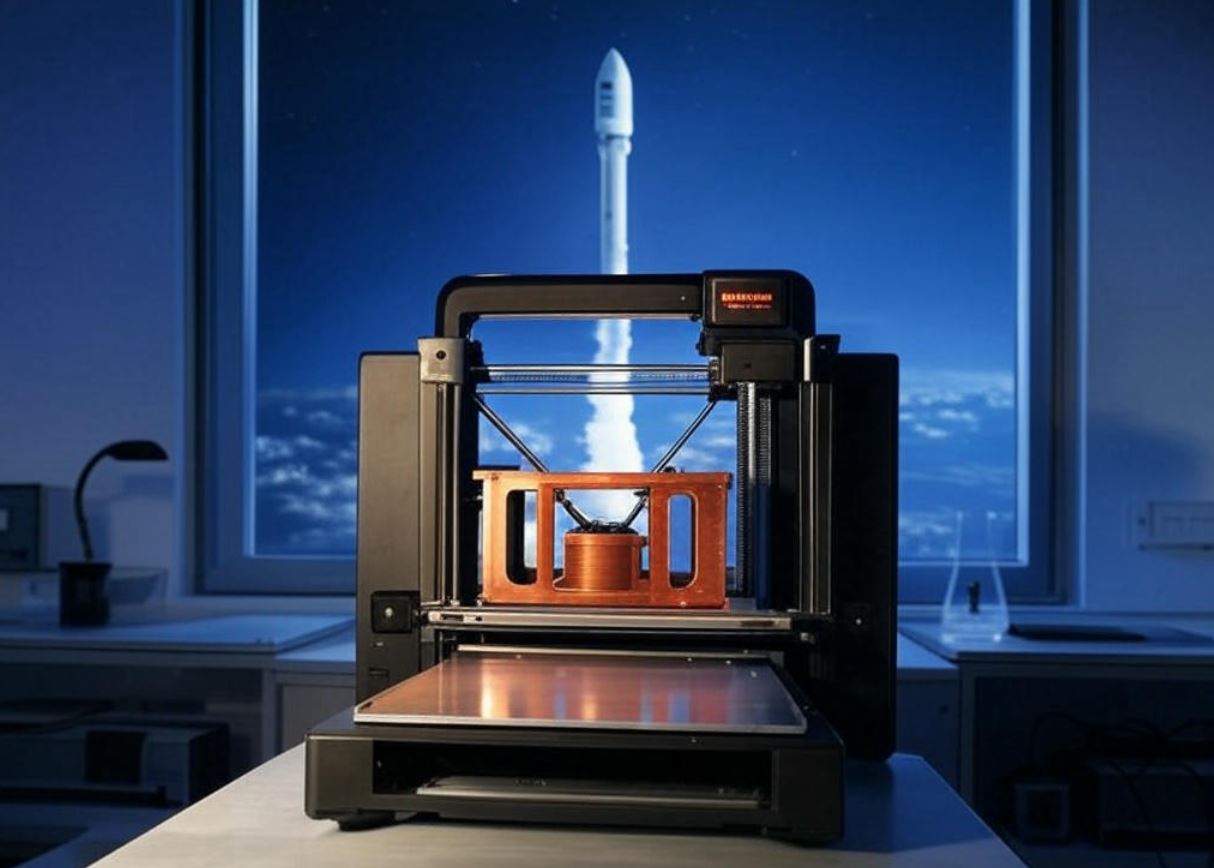March 23, 2025 – In a groundbreaking collaboration, Blue Origin, the aerospace company founded by Jeff Bezos, has partnered with Auburn University’s National Center for Additive Manufacturing Excellence (NCAME) to push the boundaries of copper 3D printing. This partnership, bolstered by Blue Origin’s donation of two EOS M290 powder bed fusion (PBF) printers, aims to overcome longstanding challenges in additive manufacturing with copper, a material prized for its thermal and electrical conductivity but notoriously difficult to print.
The announcement comes on the heels of Blue Origin’s historic achievement in January 2025, when it became the first “new space” company to successfully launch its New Glenn rocket into orbit from Cape Canaveral Space Force Station. Now, with its sights set on refining manufacturing techniques for space applications, Blue Origin is tapping into Auburn’s expertise to enhance the production of copper-based components—potentially for use in future rockets and spacecraft.
Tackling Copper’s Challenges
Copper’s unique properties make it a coveted material in industries like aerospace, energy, and electronics. However, its high reflectivity and thermal conductivity pose significant hurdles for traditional laser-based 3D printing systems. “Copper reflects much of the laser energy, making it hard to melt and fuse the powder effectively,” explained Nima Shamsaei, NCAME Director and Philpott-WestPoint Stevens Distinguished Professor of Mechanical Engineering. “Even when it does melt, its high thermal conductivity can lead to inconsistent melt pools and defects in the final part.”
The EOS M290 printers, renowned for their precision and reliability, are equipped with standard infrared (IRF) lasers that have proven capable of printing certain copper alloys, such as GRCop-42—a copper-chromium-niobium alloy originally developed by NASA. Auburn’s NCAME, already home to two EOS M290s, will use the additional machines donated by Blue Origin to accelerate research into optimizing these processes. “These new printers will allow us to expedite applied research that directly supports Blue Origin’s needs,” Shamsaei noted.
A Partnership with Cosmic Potential
Blue Origin’s collaboration with Auburn underscores the growing importance of additive manufacturing in the space industry. The ability to 3D print copper components could lead to lighter, more efficient parts for rocket engines, heat exchangers, and other critical systems. This aligns with Blue Origin’s ambitious goals, including its reusable New Shepard rocket—set to carry an all-female crew, including former NASA scientists and pop icon Katy Perry, on its 11th human flight later this year.
“Auburn’s NCAME has a long history of advancing additive manufacturing, including partnerships with NASA,” said Jonathan Pegues, a research scientist at NCAME. “This donation from Blue Origin not only strengthens our capabilities but also positions us to contribute to the next frontier of space exploration.”
Why Copper Matters
Copper’s appeal lies in its ability to conduct heat and electricity efficiently, making it ideal for applications where performance under extreme conditions is critical. However, its challenges in 3D printing have limited its widespread adoption. The success of alloys like GRCop-42, which balance printability with performance, hints at the potential for broader use—if the technology can be refined.
The EOS M290, with its 400-watt fiber laser and robust build platform, is among the best tools available for tackling these issues. By doubling NCAME’s fleet of these machines, Blue Origin is ensuring that Auburn researchers have the resources to experiment, iterate, and innovate at an accelerated pace.
Looking Ahead
This partnership is a win-win for both parties. For Blue Origin, it’s a step toward enhancing its manufacturing capabilities as it competes in the increasingly crowded commercial space sector. For Auburn, it’s an opportunity to cement its reputation as a leader in additive manufacturing research while training the next generation of engineers.
As of today, March 23, 2025, the collaboration is already generating buzz in the additive manufacturing community. With Blue Origin’s spacefaring ambitions and Auburn’s technical prowess, the future of copper 3D printing looks brighter—and closer to the stars—than ever before.




